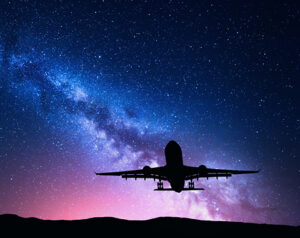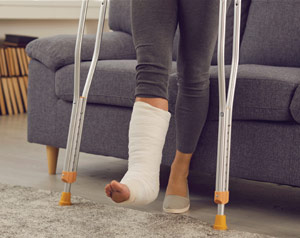 With the holiday season right around the corner, for many people that means parties, festive dinners, and more rich food, caffeine, and alcohol than they normally consume. Then, after all the celebrating, many people relax on the couch—and that creates the perfect recipe for heartburn and indigestion. Heartburn (sometimes called GERD or gastroesophageal reflux disease) is a burning sensation in the chest that occurs when stomach acid flows back up the esophagus, the tube that carries food to the stomach. Indigestion (also known as dyspepsia) refers to a cluster of symptoms that occur together, causing pain in the upper abdomen, an uncomfortable feeling after eating, or feeling full after not eating much. Fortunately, with a little planning you can prevent these problems from spoiling your holiday.
With the holiday season right around the corner, for many people that means parties, festive dinners, and more rich food, caffeine, and alcohol than they normally consume. Then, after all the celebrating, many people relax on the couch—and that creates the perfect recipe for heartburn and indigestion. Heartburn (sometimes called GERD or gastroesophageal reflux disease) is a burning sensation in the chest that occurs when stomach acid flows back up the esophagus, the tube that carries food to the stomach. Indigestion (also known as dyspepsia) refers to a cluster of symptoms that occur together, causing pain in the upper abdomen, an uncomfortable feeling after eating, or feeling full after not eating much. Fortunately, with a little planning you can prevent these problems from spoiling your holiday.
Heartburn
Heartburn can result from a number of factors including stress levels, the type and amount of food you eat, the quantity of alcoholic beverages consumed, and even lying down too soon after eating.
If you are prone to heartburn, try the following tips:
- Avoid spicy foods, foods that are fatty and fried, mustard, tomato products, citrus fruits, peppermint, chocolate, and other foods that you notice trigger your heartburn symptoms.
- When you are thirsty, choose water and avoid (or at least limit) alcohol, liquids that contain caffeine, and fizzy beverages such as soda pop.
- Pay attention to portion sizes. Eat smaller amounts spaced apart rather than filling a large plate with food and eating it all at once. This will help prevent stomach acid from building up and flowing back up into your esophagus.
- Don’t nap right after eating. Lying down soon after eating can increase heartburn symptoms.
- Try to eat at least two or three hours before bedtime, and elevate the head of your bed 15 to 20 cm (6 to 8 inches) to prevent stomach acid from flowing back up. Simply piling up pillows under your head is not enough. It is important to actually raise up the top of the bed frame.
- Ask your London Drugs pharmacist for help. We can check if your other medications might be causing your symptoms. We can also recommend or prescribe medications to prevent and treat your heartburn or upset stomach, too.
Indigestion
Indigestion is the name for a type of upset stomach that causes a variety of symptoms in your upper abdomen. Each person who experiences indigestion may have slightly different symptoms, but common ones include:
- Feeling full after eating only a small portion of your meal.
- A feeling of uncomfortable fullness that lasts longer than it should after a meal.
- Mild to severe pain or a burning sensation in the area between the bottom of the breastbone and the bellybutton.
- Nausea, the feeling that you need to vomit.
- Less common symptoms include belching and actually vomiting.
The steps that can help prevent heartburn can also help prevent indigestion. It can also help to wear loose clothing around your middle.
There are medications available to relieve indigestion. Some are available over the counter, but others require a prescription. These include antacids, H2-receptor antagonists (H2-RAs), proton pump inhibitors (PPIs), or Helicobacter pylori therapy antacids, H2-receptor antagonists (H2-RAs), proton pump inhibitors (PPIs), or Helicobacter pylori therapy.
During these busy holiday times you do not have to line up for a walk-in clinic or wait for a family doctor appointment. Visit your local London Drugs pharmacist to assess your symptoms. Your pharmacist can offer tips for prevention, recommend non-prescription treatments, write prescriptions for medications, or refer you to a doctor for further follow-up if your symptoms are unusual or more serious.
For more information about what pharmacist prescribing services are available in your province, visit https://pharmacy.londondrugs.com/pharmacy-services/pharmacist-prescribing-services.
And remember, your London Drugs pharmacists are always happy to answer your questions.

 GLP-1 agonists & diabetes
GLP-1 agonists & diabetes If you’ve ever travelled to a distant country, chances are you suffered from jet lag. Jet lag makes it hard to sleep when traveling across time zones, especially when going east. The more time zones you cross, the worse jet lag can be. Everyone has an internal body clock that keeps track of day and night. When this clock doesn’t match your destination time, you might feel sleepy during the day or have trouble sleeping at night. This is jet lag.
If you’ve ever travelled to a distant country, chances are you suffered from jet lag. Jet lag makes it hard to sleep when traveling across time zones, especially when going east. The more time zones you cross, the worse jet lag can be. Everyone has an internal body clock that keeps track of day and night. When this clock doesn’t match your destination time, you might feel sleepy during the day or have trouble sleeping at night. This is jet lag. Throughout our lives, our body keeps our bones strong by replacing old bone cells with new bone cells, but as we age this process slows down and we gradually lose more bone than we make. When bone loss occurs more rapidly than normal, bones become thin and weak, a condition called osteoporosis. When bones are severely weakened, something as simple as a fall from standing height can lead to a cracked or broken bone (called a fragility fracture), which can cause disability and sometimes even lead to death.
Throughout our lives, our body keeps our bones strong by replacing old bone cells with new bone cells, but as we age this process slows down and we gradually lose more bone than we make. When bone loss occurs more rapidly than normal, bones become thin and weak, a condition called osteoporosis. When bones are severely weakened, something as simple as a fall from standing height can lead to a cracked or broken bone (called a fragility fracture), which can cause disability and sometimes even lead to death. Measuring blood sugar (blood glucose) levels is one of the most critical things people with diabetes can do to manage their condition and prevent complications. Testing is especially important for people at risk of low blood sugar, or hypoglycemia.
Measuring blood sugar (blood glucose) levels is one of the most critical things people with diabetes can do to manage their condition and prevent complications. Testing is especially important for people at risk of low blood sugar, or hypoglycemia. Breast cancer is the second most common cancer in Canada, but it’s the most common cancer among women. One in eight women will be diagnosed with breast cancer in her lifetime. Fortunately, 82% of breast cancer cases in women are diagnosed early, increasing the likelihood of survival. In fact, nearly 90% of women in Canada survive for at least five years after a breast cancer diagnosis. Much of this positive survival rate is due to screening for the disease. Not only does breast cancer screening increase survival, it provides other benefits as well. When breast cancer is detected early, it can mean less treatment and a shorter time recovering,
Breast cancer is the second most common cancer in Canada, but it’s the most common cancer among women. One in eight women will be diagnosed with breast cancer in her lifetime. Fortunately, 82% of breast cancer cases in women are diagnosed early, increasing the likelihood of survival. In fact, nearly 90% of women in Canada survive for at least five years after a breast cancer diagnosis. Much of this positive survival rate is due to screening for the disease. Not only does breast cancer screening increase survival, it provides other benefits as well. When breast cancer is detected early, it can mean less treatment and a shorter time recovering,